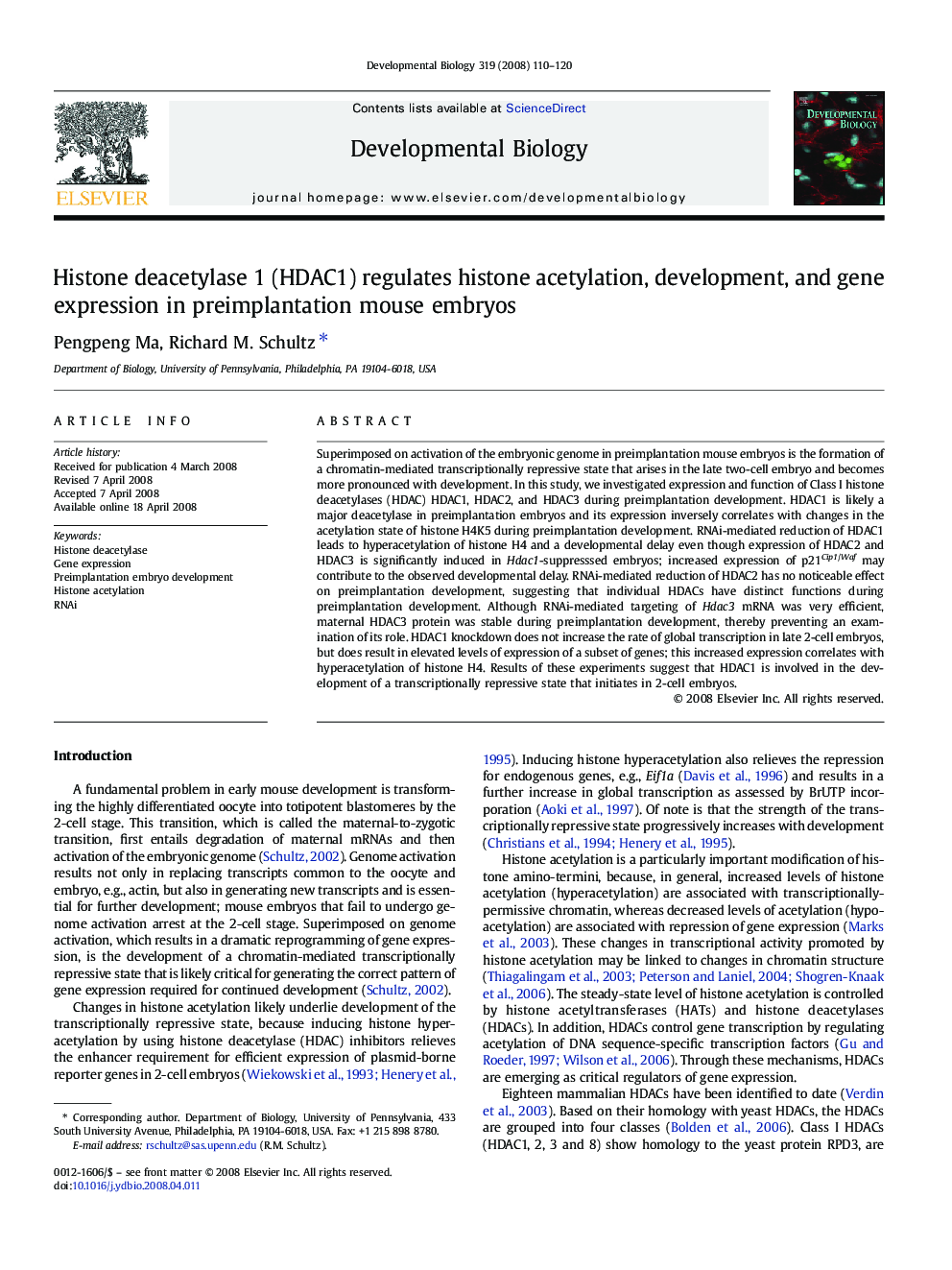| Article ID | Journal | Published Year | Pages | File Type |
|---|---|---|---|---|
| 2174739 | Developmental Biology | 2008 | 11 Pages |
Superimposed on activation of the embryonic genome in preimplantation mouse embryos is the formation of a chromatin-mediated transcriptionally repressive state that arises in the late two-cell embryo and becomes more pronounced with development. In this study, we investigated expression and function of Class I histone deacetylases (HDAC) HDAC1, HDAC2, and HDAC3 during preimplantation development. HDAC1 is likely a major deacetylase in preimplantation embryos and its expression inversely correlates with changes in the acetylation state of histone H4K5 during preimplantation development. RNAi-mediated reduction of HDAC1 leads to hyperacetylation of histone H4 and a developmental delay even though expression of HDAC2 and HDAC3 is significantly induced in Hdac1-suppresssed embryos; increased expression of p21Cip1/Waf may contribute to the observed developmental delay. RNAi-mediated reduction of HDAC2 has no noticeable effect on preimplantation development, suggesting that individual HDACs have distinct functions during preimplantation development. Although RNAi-mediated targeting of Hdac3 mRNA was very efficient, maternal HDAC3 protein was stable during preimplantation development, thereby preventing an examination of its role. HDAC1 knockdown does not increase the rate of global transcription in late 2-cell embryos, but does result in elevated levels of expression of a subset of genes; this increased expression correlates with hyperacetylation of histone H4. Results of these experiments suggest that HDAC1 is involved in the development of a transcriptionally repressive state that initiates in 2-cell embryos.
